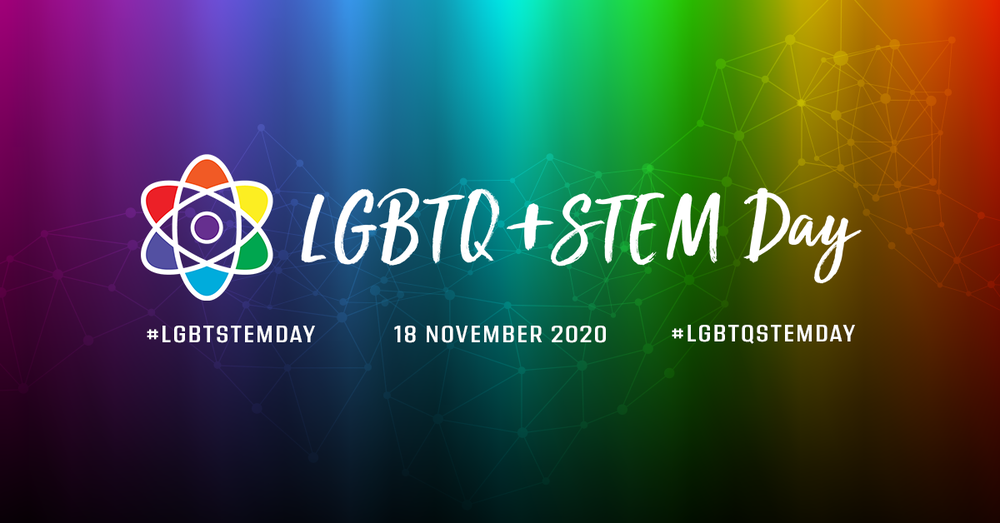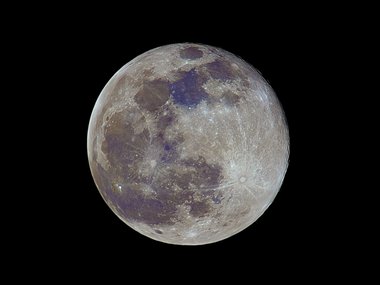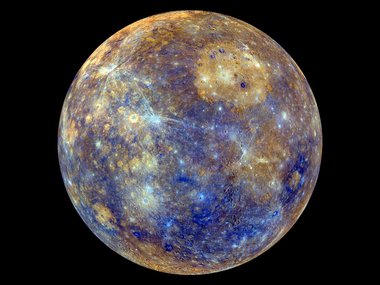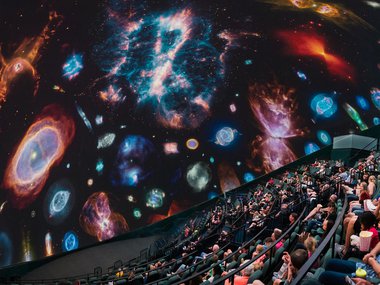Celebrating LGBT STEM Day, Frank Kameny, and Innovators Old and New
Special days get set aside to celebrate different groups throughout the year. November 18 is one of them: it’s LGBT STEM Day! I’m here to help all of us celebrate. Who am I? Your friendly Group Adventures Associate Hunter Mass! As a member of the Museum’s Center for IDEAs, a committee that focuses on inclusion, diversity, equity and accessibility at the Museum, and as a queer person, I am thrilled to be able to share information about #LGBTSTEMDay with you.
Since this may be the first time you’re hearing about LGBT STEM Day, let me start by telling you what it’s all about. LGBTSTEMDay was first organized by Pride in STEM, an organization that aims to uplift all lesbian, gay, bisexual, transgender and queer (or questioning) people in science, technology, engineering and math fields. The first celebration was on July 5, 2018, and it was celebrated again in July 2019. This is the first year it will happen in November. The whole point of this day is to celebrate the achievements of the LGBTQ+ community in STEM fields, and to provide them some much needed visibility. It’s also a day to bring awareness to some of the unique challenges that LGBTQ+ people face in STEM.
Dr. Alfredo Carpineti, the founder of Pride in STEM, said it best:
“LGBTSTEMDay won’t fix all the issues, but it will shine a big light on them. We are sure it will start conversations, and that’s so important. Ignorance kills. It is time to stop pretending that the STEM disciplines are not influenced by politics and social changes. Some science might be done in a physical vacuum, but no science is done in a historical one.”
So, why the change to November 18? Well, Pride in STEM chose this new date as it recognizes the 60th anniversary of American astronomer Frank Kameny’s workplace discrimination fight appearing before the U.S. Supreme Court. Let’s learn a little about him.

Dr. Frank Kameny, Astronomer and Gay Rights Advocate
Frank Kameny was born in 1925, and from a young age knew he wanted to be an astronomer. After serving in WWII, Kameny returned to his studies. After earning a degree in physics from Queens College, he then enrolled at Harvard, where he would later graduate with a doctorate in astronomy. He spent several summers working at the Harvard College Observatory, and came to be known as an authority on the aluminum re-coating process needed to maintain telescope mirrors. He taught astronomy briefly at Georgetown before being recruited to the U.S. Army Map Service, which he accepted with hopes of becoming an astronaut. Unfortunately, that is where things took a turn.
See, Frank Kameny was a gay man. At the time, various laws prohibited LGBTQ+ people from serving in the federal government. And that’s the exact reason Kameny was fired in 1957. He sued the Civil Service Commission for discrimination, and his argument even made its way to the Supreme Court, but they didn’t take up the case.
"At the time I was fired, the whole space program was just beginning," said Kameny. "I might have gone to the moon."
His opportunities stripped from him, he devoted the rest of his life to activism. To read more of Kameny’s pioneering gay rights activism, such as his role in the removal of homosexuality from the American Psychiatric Association’s Diagnostic and Statistical Manual of Mental Disorders, you can check out this article from the Washington Post.
The life of Frank Kameny goes to show why LGBT STEM Day is so important. Too often when it comes to LGBTQ+ scientists, we hear of discrimination, harassment or worse. LGBTQ+ students and professionals are more likely to experience discrimination, more likely to have feelings of isolation and less likely to continue a career in their fields than their peers. LGBT STEM Day hopes to change that by pointing out positive role models and their achievements.
Notable LGTBQ+ Scientists
Now that we’ve talked about #LGBTSTEMDay and Frank Kameny, let’s look at a few LGBTQ+ innovators. See if you recognize any of them!
- Leonardo da Vinci (1452-1519): Italian artist, scientist, inventor and historically documented to have an attraction to men.
- Sir Francis Bacon (1561-1626): English philosopher, Father of the Scientific Method and historically documented to have an attraction to men.
- Florence Nightingale (1820-1910): English statistician, founder of modern nursing and historically documented to have an attraction to women.
- Alan Turing (1912-1954): English mathematician, father of modern computer science and a gay man.
- Sally Ride (1951–2012): American astronaut, first American woman in space, founder of Sally Ride Science and a gay woman.
- Lynn Conway (1939-): American computer scientist, developed supercomputers and microelectronic chips, and a transgender activist.
- Ben Barres (1954-2017): American neurobiologist, identified the crucial role of glial cells in the brain and transgender.
- Ruth Gates (1962-2018): American marine biologist, expert on coral biology, created “super corals” that are more resistant to climate change and an out lesbian, married to a woman.
- Sean Whelan (1967-): British-American virologist, identified the cellular protein used as a receptor by the Ebola virus, 2020 recipient for LGBTQ+ Scientist of the Year by NOGLSTP and a gay man.
- Lauren Esposito (living): American arachnologist, only woman expert on scorpions, co-founder of 500 Queer Scientists and a queer scientist herself.
- Izzy Jayasinghe (living): Sri Lankan-British biologist, expert in super resolution microscopy, biophysics, cardiac muscle and skeletal muscle, and a transgender lesbian.
Now, how many did you recognize? Were you surprised by any? This short list barely scratches the surface of the contributions that LGBTQ+ people have made to STEM. I hope you get inspired to look into more innovators and trailblazers.
The Future of LGBTQ+ People in STEM
To close, our own Museum Astronomy Educator Mariarosa Marinelli--whom you may remember from our recent breakdown of cosmic spider webs--provides these inspiring thoughts:
An absence of role models, intentional by exclusion and erasure, combines with contemporary homophobia and transphobia to actively push LGBTQ people out of STEM. As a result, we are underrepresented in STEM. Those who persist may remain closeted, afraid or unable to be their authentic selves. Although there’s been significant societal progress toward tolerance and acceptance for LGBTQ people recently, I’ve still faced homophobia from colleagues, classmates and professors as a lesbian studying astronomy and physics.
It’s not enough to simply recognize people who were unjustly persecuted for their identity, or who hid their identity in order to break new ground in their fields. We must actively change these spaces, to make our fields better now and for those who come after us. I believe that one way to make STEM more welcoming is being open about our identities if we can safely do so. In my experience, this helps build community with other LGBTQ people who may or may not be out, and these relationships can be a vital way to support each other.
Further Recommended Resources
Don't stop learning about and celebrating the achievements of the LGBTQ+ community in STEM fields. Here are some resources to help you continue your quest for knowledge.


